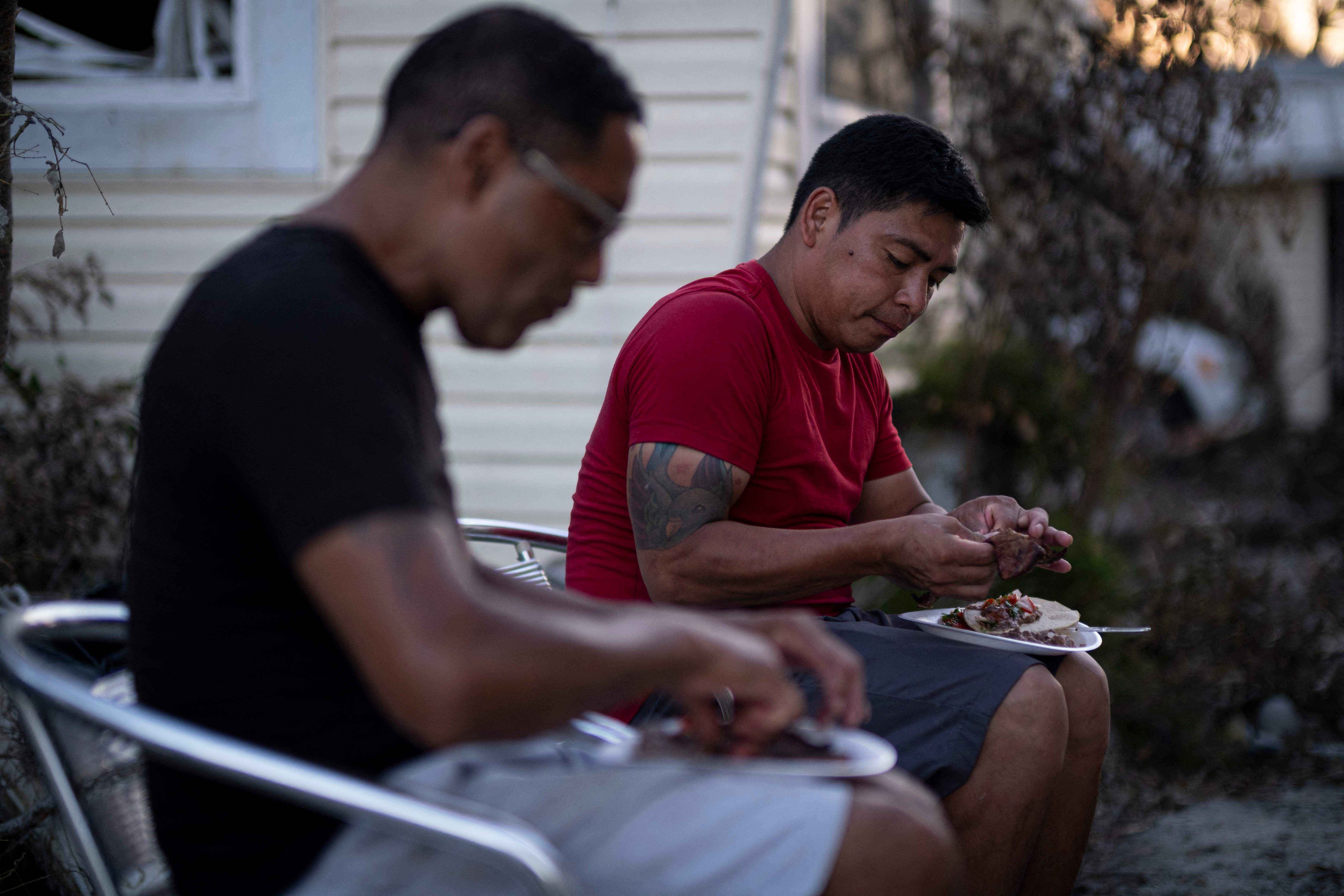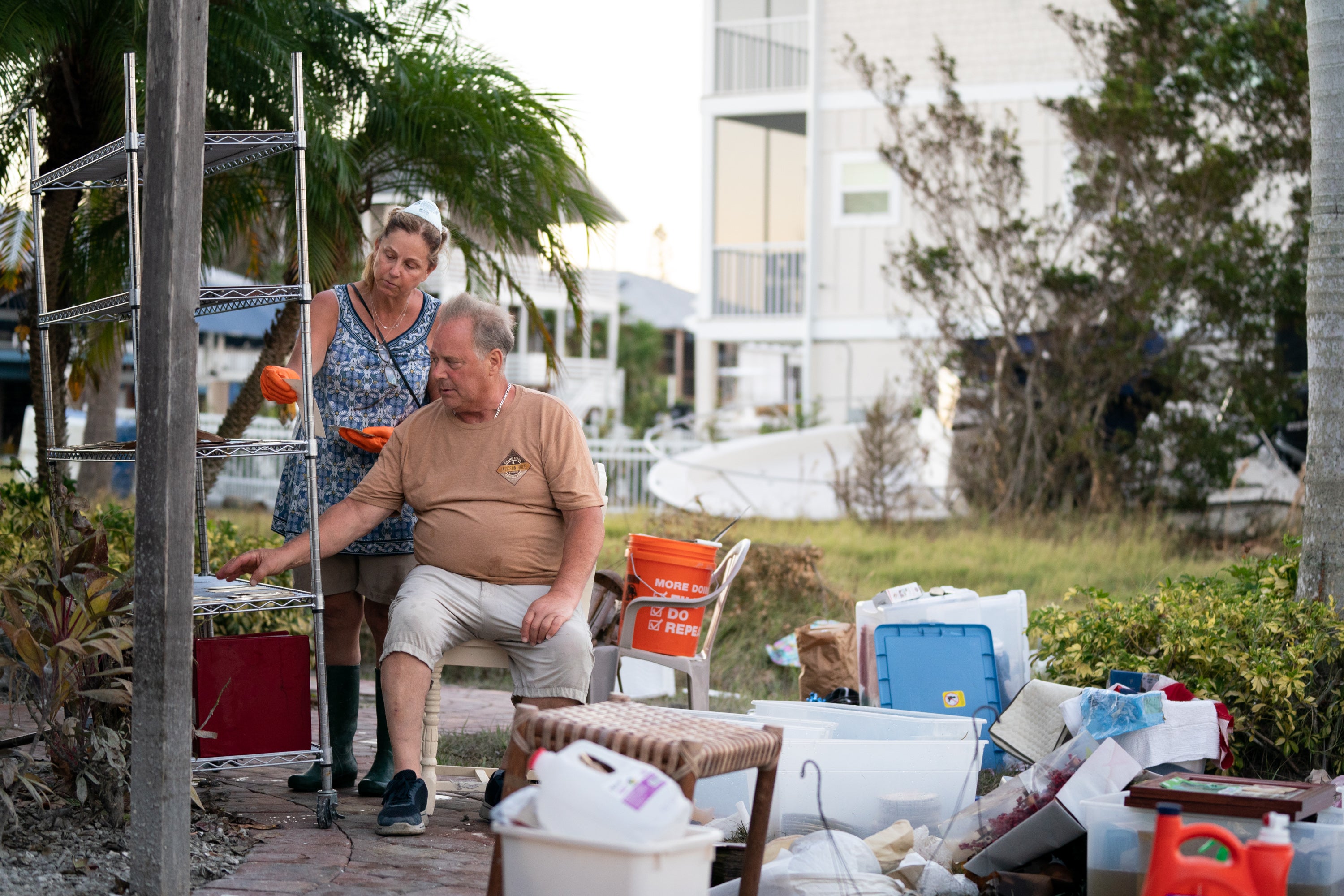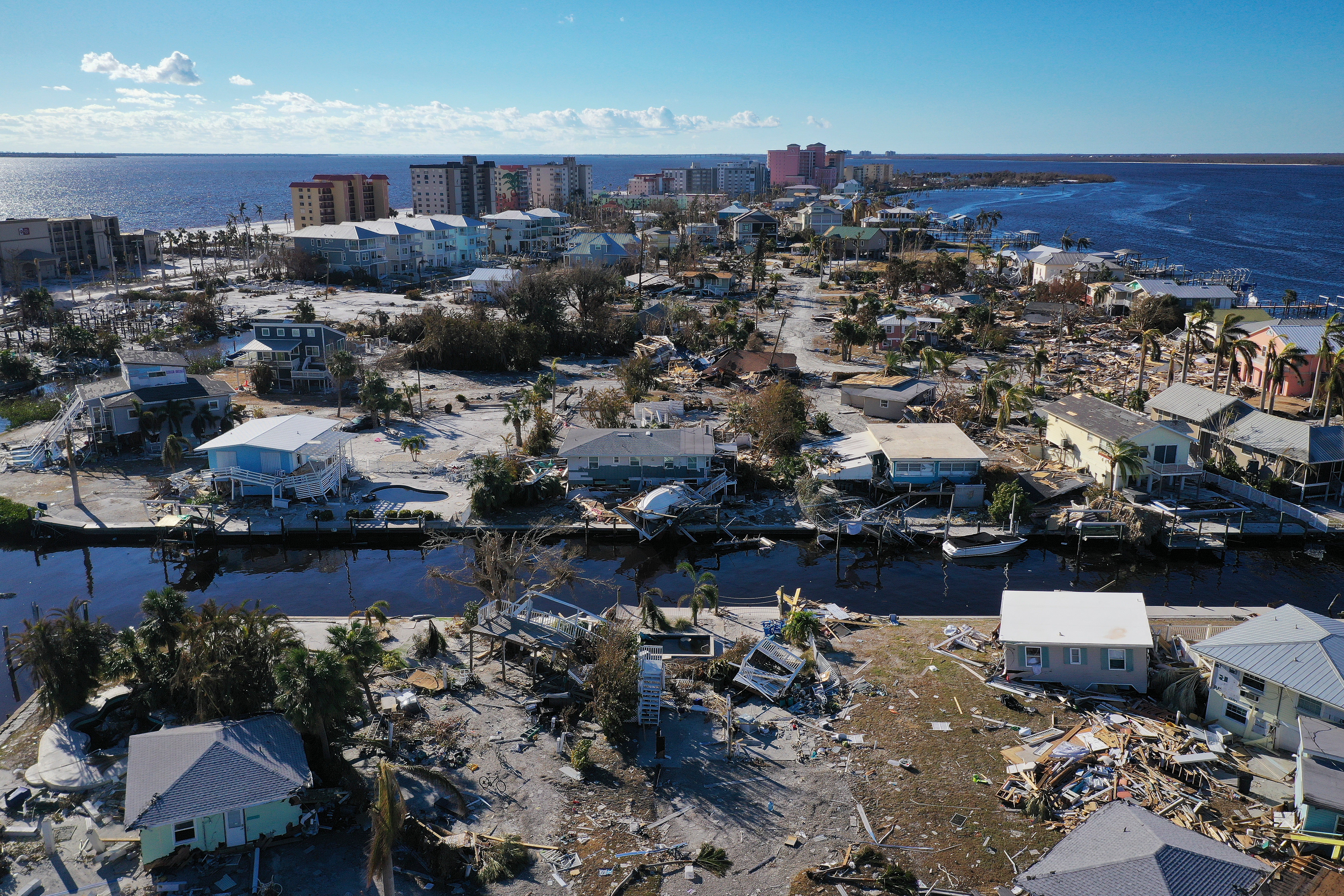Florida death toll rises to 100 as many still left without power after Hurricane Ian
Residents are returning to towns full of mud and debris, as survivors share harrowing stories
The death toll from Hurricane Ian has risen to more than 100 people in Florida and North Carolina as officials continue to assess the damage and continue to search for victims and survivors.
In addition, nearly 600,000 customers in Florida were still without power as of Monday.
Meanwhile, residents of some of the hardest-hit communities around Fort Myers and Port Charlotte are sorting through damaged homes, destroyed roads and an uncertain future.
While the initial danger has passed, these impacts point to a long road ahead for many communities devastated by one of the most destructive hurricanes in recent US history.
As of Monday morning, the death toll from Hurricane Ian stands at more than 100 people, with 100 in Florida alone.
Lee County, Florida — right where the storm first made landfall in the US — has reported 54 deaths, according to reporting at ABC News. In nearby Charlotte County, sheriffs have reported 24 deaths from the storm, they add.
Other counties in Florida had nearly two dozen other deaths combined, according to CNN. Four additional people were killed as a result of Hurricane Ian’s impact in North Carolina later in the week, according to Governor Roy Cooper’s office.
Rescue teams are still going door-to-door in some places to check on people and find victims. Most coastal areas were under mandatory evacuation orders ahead of the storm, but some residents chose to stay — and first responders are still accounting for people who may have been killed or injured last week.

Some people who stayed behind are sharing stories of escaping rising floodwaters and protecting family members. One man in Naples, Florida, told NBC 2 News that he swam a half-mile through his flooded neighbourhood to reach his 84-year-old handicapped mom, whose home was quickly filling up with water.
Continued power outages are concentrated in southwest Florida, with more than 50 per cent of customers in Lee and Charlotte counties still in the dark, according to poweroutage.us.
Widespread outages have also not been restored in neighbouring counties like Sarasota and DeSoto, as well as Volusia County on Florida’s east coast.
Florida Power and Light, which provides electricity to about half of the state’s population, has said that 95 per cent of customers in their affected areas will have power restored by the end of the day on October 9, this Sunday. They also note that some homes and businesses may have incurred so much damage that restoration isn’t yet possible.

Dozens of communities are also still under boil-water notices as officials assess the damage and safety of running water in areas affected by the hurricane. Some of the hardest hit parts of Lee County — Sanibel Island, Pine Island and Fort Myers Beach — do not have any running water, reports theFort Myers News-Press.
Cities like Bonita Springs, Fort Myers Beach, Cape Coral and others in Lee and Charlotte counties are filled with wreckage and roads covered in mud. Cars and boats lay strewn, often on their sides or upside-down, along lawns and beaches.
People who evacuated these areas are returning home to find their homes destroyed and some of their neighbours killed. One woman showed CNN the water line inside her home, which had reached multiple feet, noting that all her possessions had been destroyed.

And some communities remain completely isolated. Sanibel and Captiva islands off the coast of Fort Myers have no road access to the mainland after the Sanibel Causeway bridge was destroyed in multiple sections. The same goes for Pine Island, another barrier island in Lee County, whose bridge was also destroyed.
While many on these outer islands evacuated ahead of the storm or have been rescued, the News-Press is reporting that about 20 people may still be on Sanibel Island. For those that remain, without power, water or a connection to the rest of the world, the past few days have been intense.
The Tampa Bay Times reported on one 81-year-old who, after riding out the storm on Pine Island, was running out of food and water and couldn’t make it to the evacuation site. He was eventually rescued by the Coast Guard and made it to the mainland.
Hurricane Ian was one of the strongest storms on record to hit Florida. By the time it made landfall on Wednesday afternoon, the hurricane had reached nearly Category 5 strength, with wind speeds up to 150 miles per hour (241 kilometres per hour).
These kinds of intense storms are likely to get more common as the climate crisis grows. Warmer ocean waters can quickly power up a cyclone, adding more wind power and rain before it hits land — and leading to vastly more damage when it hits.
Join our commenting forum
Join thought-provoking conversations, follow other Independent readers and see their replies
Comments


Bookmark popover
Removed from bookmarks